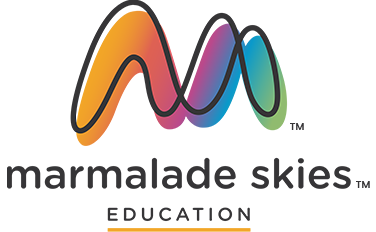Professional Development Offerings
General Topics
- Disabilities 101 – what is dyslexia, autism (levels 1-3), dysgraphia, ADHD, non-verbal communicators; what is Orton-Gillingham methodology, selective mutism, receptive vs. expressive language, auditory processing, working memory vs. short term memory, visual-neural processing.
Companion Courses: Why Can’t They Read?, Increasing Reading Engagement, Why Can’t They Write?, Increasing Writing Engagement, Dyslexia & Reading, Dysgraphia & Writing, Reading & Autism,
- Making Learning Fun – Gamify your instruction to increase student engagement in reading and writing
Companion Courses: Why Can’t They Read?, Sight Words, Strengthening Foundations, Why Can’t They Write?, Increasing Writing Engagement, The Building Blocks of Reading
- Identifying Learning Challenges – Identify the barriers to learning and learn how to help the student learn more effectively.
Companion Courses: Integrating ST, Integrating OT, On the Spectrum – Reading Comprehension, On the Spectrum – Writing, Disabilities 101
- Forming and Following IEP Goals – how to create appropriate IEP goals and objectives
Companion Courses: IEP Goals in Daily Coursework, IEP Data Collection, Increasing Reading Engagement, Increasing Writing Engagement, Sight Words, Why Can’t They Read?, Why Can’t They Write?
Reading Topics
- Why Can’t They Read? – How to identify and remove a student’s obstacles for learning how to read.
- Increasing Reading Engagement – how to increase meaningful student engagement during reading instruction. Reading instruction works best after you identify the primary obstacles or challenges and then fix or remove them.
- Reading Foundations – Terminology: digraphs, phonemes, consonant blends, syllables, sound-to-symbol correspondence, spelling rules, Orton-Gillingham, Science of Reading, the stages of reading development
- Sight Words – When and how to teach sight words, which sight words should be memorized
- Building Fluency – Increase reading fluency for neurodivergent students. Learn to move your students from sounding out individual words to reading smoothly. Match-my-pitch exercises, vocal tenor, diaphragmatic breathing exercises.
- Integrating ST Into reading – Integrating speech-therapy techniques into reading instruction. What are effective/relevant ST techniques to increase reading? Tongue placement, oral motor programming.
- Dyslexia & Reading – Advanced techniques for teaching students with dyslexia to read, greek and Latin roots, prefixes, suffixes, morphology and syntax, spelling rules,
Companion Courses: Advanced Dysgraphia, Disabilities 101, Building Fluency, The 6 Syllable Types
- Reading Comprehension – Reading comprehension techniques for neurotypical students and for students who are on the autism spectrum. Cause and effect, making predictions, identifying the subject and the action, social/behavior perspectives, perspective matrix, annotation
- Autism & Reading – Advanced techniques for teaching students with autism how to decode. Blending, rollercoaster arms, positive reinforcement, visual schedule, formulaic reading, autism overview.
Companion Courses: Disabilities 101, Identifying Learning Challenges, The Building Blocks of Reading
- The 6 Syllable Types – Learn the six-syllable types to improve students’ spelling, decoding, and fluency
- The Building Blocks of Reading – How to teach sound-to-symbol correspondence and symbol-to-sound correspondence, common teacher missteps, what to look for when teaching decoding and blending, how to help a student who can’t blend, crossing midline strategies for blending
Written Expression Topics
- Why Can’t They Write? – Identifying and removing obstacles to writing sentences and paragraphs – differentiated graphic organizers, messy brainstorms, 6 steps of writing, gamifying the writing process, how to get out ideas, using technology & available resources during the writing process
- Increasing Writing Engagement – change the writing process from stressful to fun. Identify the barriers to students’ writing ability. Handwriting legibility, messy brainstorms, graphic organizers, perspective matrix, 6 steps of the writing process.
Companion Courses: Integrating OT into Writing, Expanding Your Students’ Writing, Why Can’t They Write?
- Expanding Your Students’ Writing – techniques and strategies for teaching your students how to expand their writing ideas. From words to sentences; from sentences to paragraphs.
- Integrating OT Into Writing – Integrating occupational-therapy techniques into writing instruction, handwriting, letter formation, fine motor building for correct pencil grip, visual tracking exercises for reading
- Dysgraphia & Writing – Advanced techniques for teaching students with dysgraphia to write, letter formation techniques, gross motor vs fine motor strategies, what is dysgraphia, executive functioning.
Companion Courses: Disabilities 101, Identifying the Learning Challenge
- Autism and Writing – Advanced techniques for teaching students with autism written expression. Common challenges, gamifying the writing process, writing templates, graphic organizers, perspective matrixes, autism overview.
- The Building Blocks of Writing – writing conventions, rubrics, grammar and punctuation, conjunctions, tenses, vocabulary expansion, prepositional phrases, from “dull-to-lively” writing
Individual Education Plans (IEP) Topics
- IEP Goals – How to write IEP goals
- IEP Goals And Daily Classwork – Writing and incorporating IEP goals into everyday classwork
- IEP Data Collection (reading) – Collecting data, how to monitor progress for children with IEP goals in reading.
- IEP Data Collection (writing) – Collecting data, how to monitor progress for children with IEP goals in writing.
Sample Schedules:
Monthly Seminars:
One, 60-90 minute seminar each month
Month (Select 6-10 months) | Topic Topic of your choice (recommendations can be made). Select in-person or virtual |
| Month 1 | |
| Month 2 | |
| Month 3 | |
| Month 4 | |
| Month 5 | |
| Month 6 | |
| Month 7 | |
| Month 8 | |
| Month 9 | |
| Month 10 |
Quarterly Workshops
One, 3-hour workshop each quarter. (4x per school year)
Most quarterly workshops take place in-person, on campus. However, workshops may be delivered virtually
Quarter Select the dates on which you’d like the training to take place (Mon-Sun). | Topic Topic of your choice. (Recommendations can be made). |
| Quarter 1 | |
| Quarter 2 | |
| Quarter 3 | |
| Quarter 4 |
Combined Approach:
Two, 1-hour seminars (select two sequential months) plus 3 quarterly half-day seminars.

